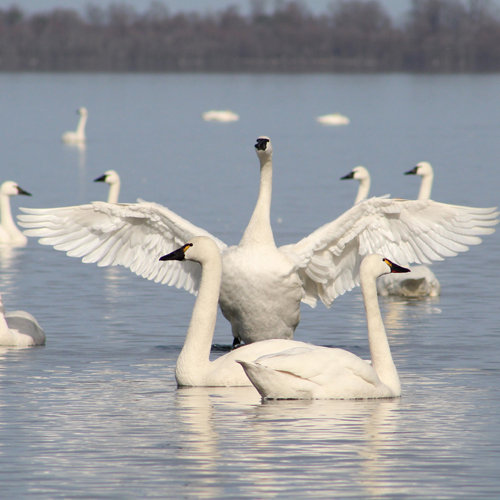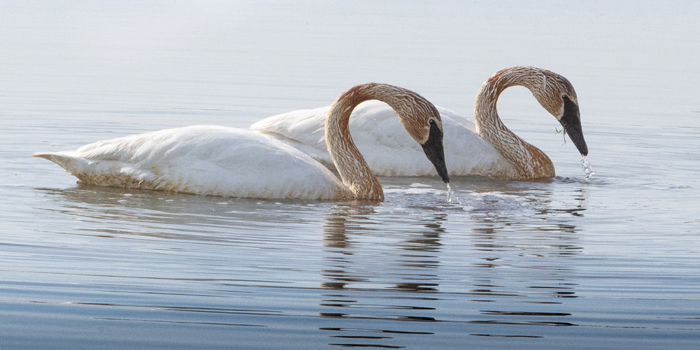Seven Swans A Swimming…at Howard Marsh
By Karen Menard
December is not only a time to celebrate the holidays, but the beauty of nature in winter as well.
Consider a trip to Howard Marsh Metropark in the next month to look for migrating flocks of tundra swans or overwintering trumpeter swans. Both species can often be seen floating or “swimming” in different areas of this Metropark.
During late fall into winter, tundra swans migrate from their breeding grounds in the high arctic and pass through our area. Stopover flocks will feed mostly on aquatic plants, as well as mollusks, arthropods, and waste grain in adjacent farm fields.
Sites like Howard Marsh are important stops for these migrants to rest and refuel along their long, arduous journeys.

Trumpeter swans actually nest in the Lake Erie marsh region, and many individuals can still be found using these areas during the winter season. In addition to the Lake Erie marsh sites, these birds also nest in central and southeastern Ohio.
Considered to be the largest waterfowl species in North America, trumpeter swans can reach a weight of 26 pounds. Tundra swans differ in that they weigh in at a smaller size, have a shorter bill, and sport a yellow patch in front of their eyes. Their calls also differ. Tundra swans make a high pitched, “woo--OO--woo” call while in flight and trumpeter swans make a loud, trumpeting, “oh—OH” call.
Tundra swans are considered to be the most common swan species in North America, yet trumpeter swans are currently state-threatened in Ohio. This species was nearly extirpated from the state in the mid-1800’s; however, in 1996, Ohio became involved with reintroduction plans to restore trumpeter populations. Last year, according to the Ohio Division of Wildlife, the number of breeding pairs for the state reached 111.
Annual, continued success for this species relies on consistent invasive species control and wetland habitat restoration, which continues to take place at Metropark sites like Howard Marsh, further supporting swan conservation.
Did You Know?
A female swan’s nickname is “pen” as the female’s feathers often made the best quill pens. The male swan is sometimes referred to as a “cob” (from the Middle English word, cobbe—leader of the group). Swans are long-lived, with records of up to 24 years in the wild.
--
Photos: Above, tundra swans (stock photo); below, trumpeter swans, by Art Weber
